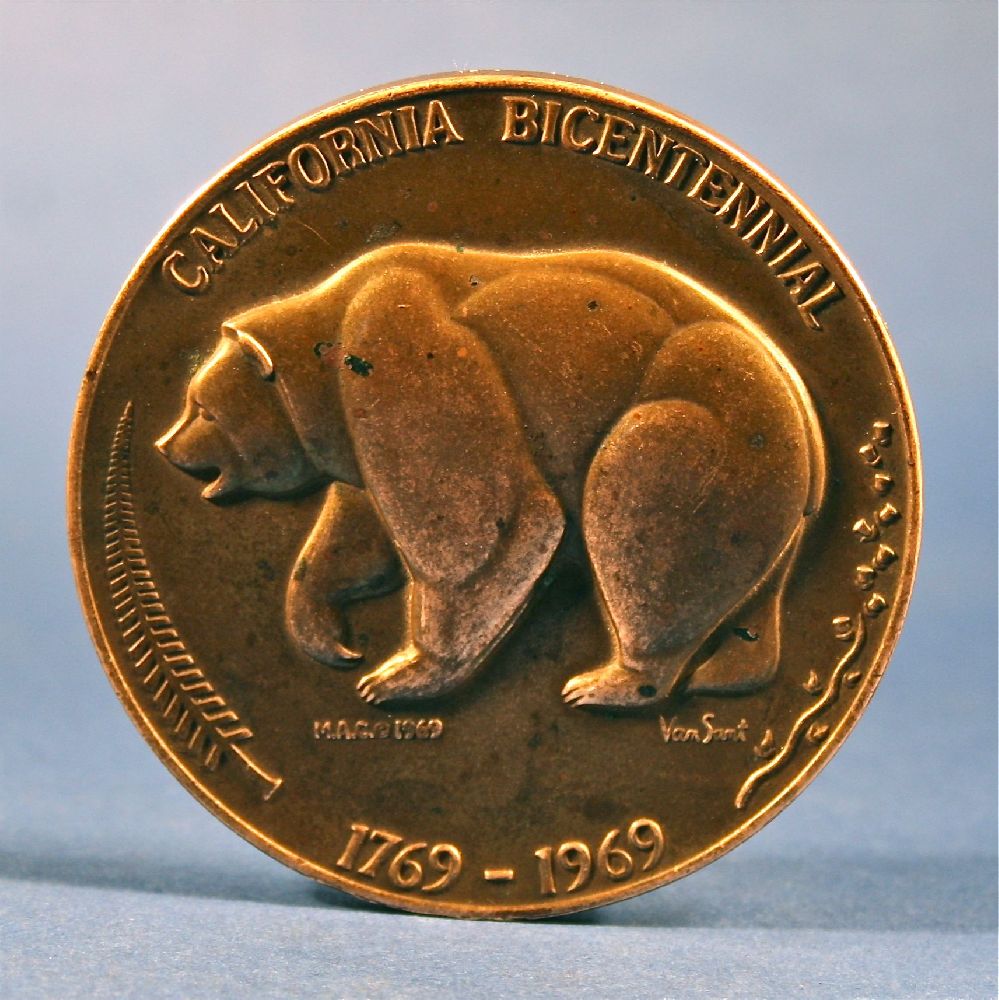

Title: Antique California Bare Bicentennial Bronze Medal Medallion Token
Shipping: $9.00
Artist: N/A
Period: 20th Century
History: N/A
Origin: North America > United States
Condition: Very Good
Item Date: 1969
Item ID: 6009
California Bicentennial Medal struck in bronze. 1969 California (CA) Bicentennial Bronze Round. Antique california bicentennial bare 1769-1969 California Bicentennial Golden Land United States of America, California Commemorative Token, 1969 CALIFORNIA BICENTENNIAL / 1769-1969 Grizzly bear walking leftTHE GOLDEN LANDEight men from different professions standing facing each other, products in fields and below Reeded edge, Bronze Minted. All of the art is edited and chosen by us for its high quality and workmanship before posting. We are committed to enhancing our customer’s lives by discovering creating, and pointing out only the best art we can find in the world today. We Are Taste-Makers, Art Advisers, Consultants & Publishers Of Spectacular Art Stories. Our job is to be intermediaries between buyers and sellers. We are vetting for high end art patrons. We are determined to catalog the world's most exceptional art and share it with everyone.
Link: http://en.wikipedia.org/wiki/History_of_California
The history of California can be divided into: the Native American period; European exploration period from 1542 to 1769; the Spanish colonial period, 1769 to 1821; the Mexican period, 1821 to 1848; and United States statehood, which continues to the present day.
Different tribes of Native Americans have lived in the area that is now California for an estimated 13,000 to 15,000 years. Over 100 tribes and bands inhabited the area.[1] Various estimates of the Native American population in California during the pre-European period range from 100,000 to 300,000. California's population held about one-third of all native Americans in what is now the United States.
The native hunter-gatherers practiced various forms of forest gardening and fire-stick farming in the forests, grasslands, mixed woodlands, and wetlands, ensuring that desired food and medicine plants continued to be available. The natives controlled fire on a regional scale to create a low-intensity fire ecology which prevented larger, catastrophic fires and sustained a low-density agriculture in loose rotation; a sort of "wild" permaculture.